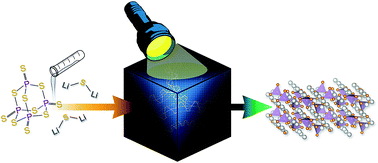Solution-based synthesis of lithium thiophosphate superionic conductors for solid-state batteries: a chemistry perspective†
Abstract
All-solid-state batteries require solid electrolytes that exhibit both high mechanical and chemical stability, as well as a high ionic conductivity. Despite the many decades of research that have led to significant breakthroughs in this field, the synthesis of high-performance ionic conductors is still quite costly with limited scalability, i.e. it is highly energy and time intensive. To this end, the development of cheap and scalable solution-based approaches for fabricating state-of-the-art solid electrolytes is of great interest; however, a deeper understanding over the fundamental solution chemistry and reaction mechanisms governing these synthetic approaches is either absent or not broadly conveyed in the literature. Herein, we review some of the more recent works on solution-based syntheses of alkali thiophosphates contextualized within a broader scope of the literature in an attempt to provide some additional chemical insights and underline the areas where specific knowledge is lacking. Focusing primarily on Li+ containing electrolytes, we provide a deeper look into both prototypical reagents and possible alternatives, highlight the importance and potential influences of polysulfide/S–S bonding, and discuss the significance of precursor stoichiometry. We hope that this review provides a unique outlook on solution-based syntheses of alkali thiophosphates leading to a better understanding over the critical parameters that govern the optimization of this class of superionic conductors.

- This article is part of the themed collection: Recent Review Articles


 Please wait while we load your content...
Please wait while we load your content...